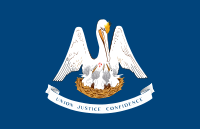
Photo from wikipedia
We identified cultivable fungi present on the surface of five archaeological sealers' artifacts from the beginning of the 19th century collected on Livingston Island, Antarctica. Twenty fungal isolates were recovered… Click to show full abstract
We identified cultivable fungi present on the surface of five archaeological sealers' artifacts from the beginning of the 19th century collected on Livingston Island, Antarctica. Twenty fungal isolates were recovered and identified using biology molecular methods as taxa of Antarctomyces, Linnemannia, Penicillium, Mortierella, Talaromyces, and Trichoderma. Penicillium was dominant on artifacts stored at 10 and 25 °C. In contrast, Antarctomyces, Linnemania, Mortierella, and Trichoderma occurred only on artifacts stored between 8 °C and 10 °C. Our results showed that the Antarctic artifacts harboured cosmopolitan mesophilic, cold-tolerant, and endemic psychrophilic fungal taxa. The mesophilic fungi might have contaminated the artifacts in situ, during sampling, transport, and/or storage in the laboratory collection or represent dormant but viable form capable to grow on the objects. However, the detection of cold-tolerant and endemic fungi shows that these fungi, when stored between 8 ° and 10 °C, continue growing on the objects, which may supply them with organic nutrients; this may accelerate degradation of artifacts in the collection. Preventive steps should be adopted to avoid further microbial contamination. Sterilised microbiological conditions can be followed during fieldwork and transportation to Brazil. The preventive protocol may represent a better alternative to avoid artifact microbial proliferation to preserve rare Antarctic archaeological heritage.
Journal Title: Anais da Academia Brasileira de Ciencias
Year Published: 2022
Link to full text (if available)
Share on Social Media: Sign Up to like & get
recommendations!